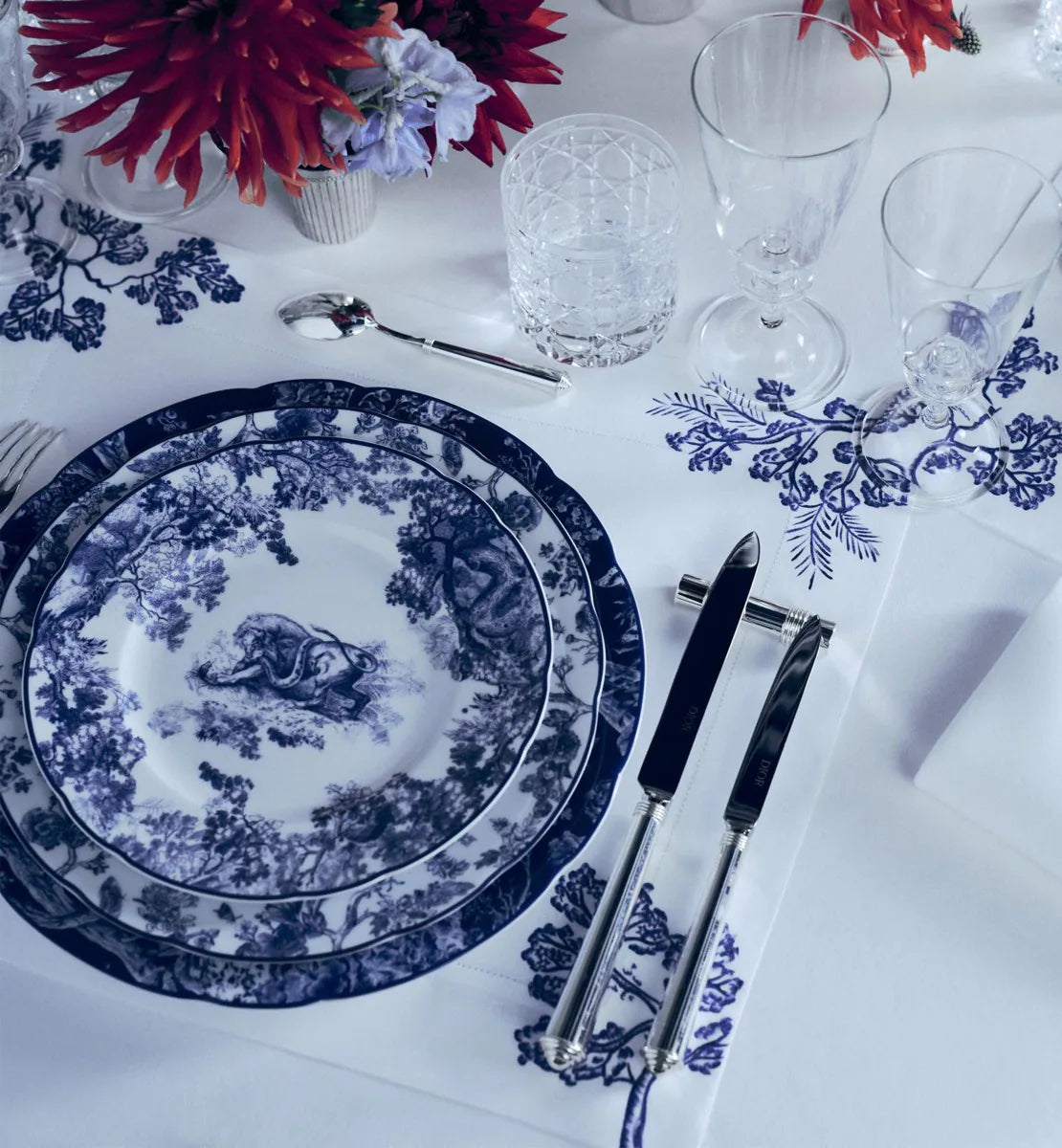blue + white: a tour through design history, part two
by clé tile | published: Jun 21, 2023

Dior Toile de Jouy place setting (source)
was there ever a more perfect — or long-lived match — as blue and white? it’s not just timeless, it’s beyond time, universal in geographic reach — and in spirit. as we developed our collection of blue and white tile — 17th century, maiolica de Delft — we delved into the aesthetic and cultural history of blue and white. so rich was it that we had to split it into two parts. read part one here.
by the 20th century, from Europe to the Americas, blue and white had become firmly ingrained in interior design as a signal of classic taste to be employed any time a nod to tradition (with a touch of nostalgia) was called for.


from tile to textile — back to the roots of blue and white?
the true democratizing influence of blue and white in design wasn’t porcelain or tile — but textile.
in France, toile de Jouy translated the blue and white motif (along with other colors) to fabric. cheaper and more broadly available thanks to strong domestic textile manufacturing, toile de jouy began moving beyond classic Chinese motifs, depicting romantic, pastoral and rural scenes. It soon became a hallmark of classic French provincial design… and in time, toile de Jouy spread from more simple country French design back up to the aristocratic classes.

french toile de jouy pattern (source)

and centuries later, more humble forms of blue and white also proved to be among the most powerful unifiers of “high” and “low.”
and centuries later, more humble forms of blue and white also proved to be among the most powerful unifiers of “high” and “low.”
cheap and accessible, indigo dye was commonly used throughout the world to create resist-dyed textiles like shibori. inexpensive, these blue and white fabrics were often associated with the working class. in Japan, for example, mending techniques like aizome, sashiko and boro traditionally used indigo-dyed textiles and white cotton thread, which were both inexpensive and readily available.

shibori, indigo dyed textiles (source)

but as contemporary designers began to incorporate traditional Japanese wabi-sabi design principles and motifs into their projects (inspired by Japanese fashion designers such as Junya Watanabe who’d long incorporated these techniques), boro began to find their way into upscale homes, with designers introducing touches of blue and white shibori and boro into their interiors, elevating these techniques to a position of knowing refinement — if not art.

k5 tokyo hotel designed by Claesson Koivisto Rune (source)

junya watanabe spring 2015 mens (source)

denim has become the ultimate cross-pollinator, moving from workwear and fashion into art. Paris’s influential collectible design gallery Carpenters Workshop opened a show in 2023 featuring denim. entitled Harry Nuriev: Denim, it features domestic objects from mirrors to dining tables to dumbbells — elevated to the level of art by our favorite textile.
and on to art
denim has become the ultimate cross-pollinator, moving from workwear and fashion into art. Paris’s influential collectible design gallery Carpenters Workshop opened a show in 2023 featuring denim. entitled Harry Nuriev: Denim, it features domestic objects from mirrors to dining tables to dumbbells — elevated to the level of art by our favorite textile.

harry nuriev: denim, shown at carpenters workshop, Paris 2023 (source)

thanks to denim, that winning combination of blue and white is synonymous with comfort and casual ease — which is why it’s used so extensively in homes that are anything but classical and traditional.
blue and white: from renaissance palaces to laid back interiors, high brow or low brow, it’s a chromatic classic that will never go out of style.
find your blue and white








